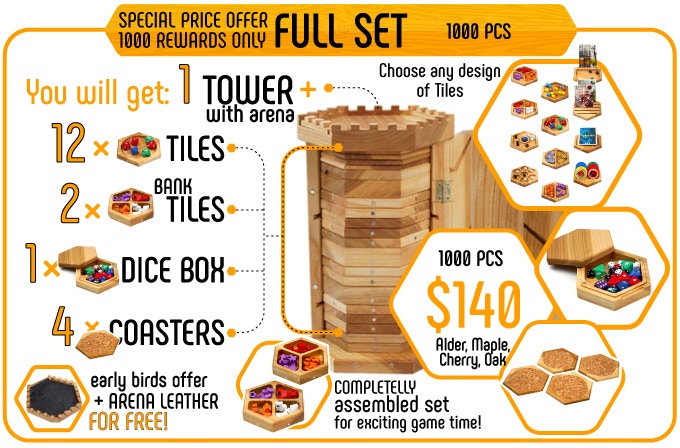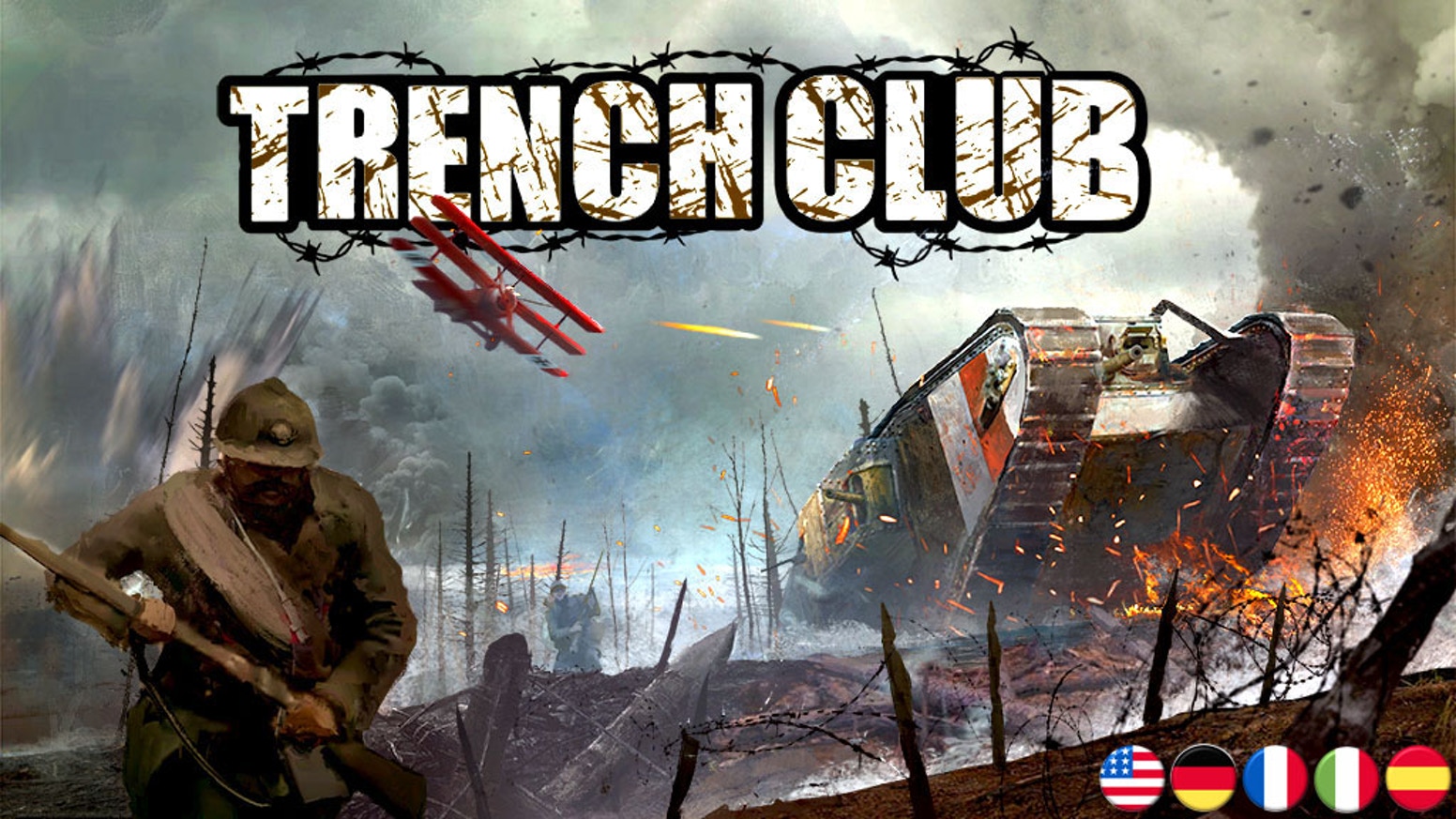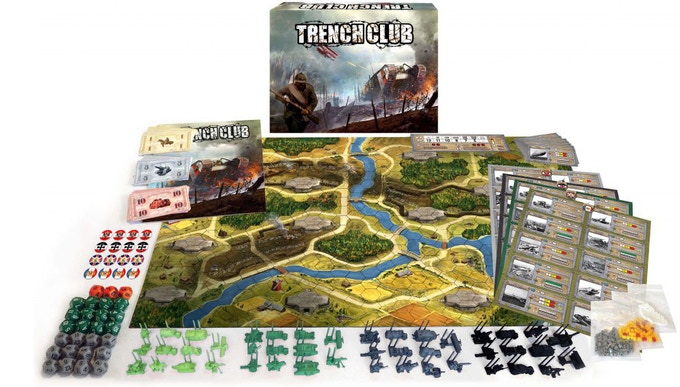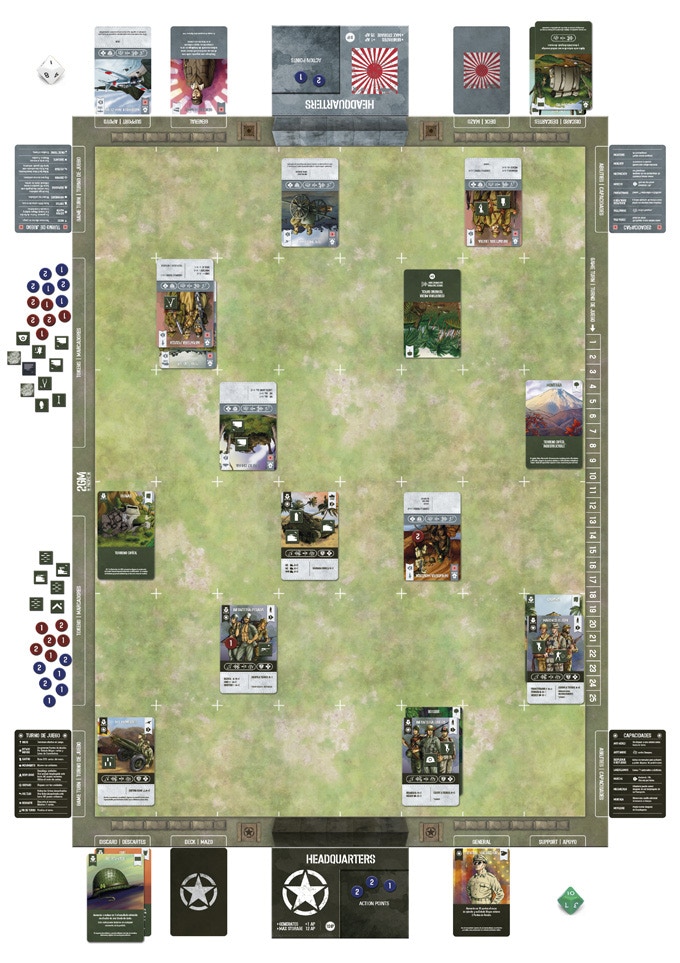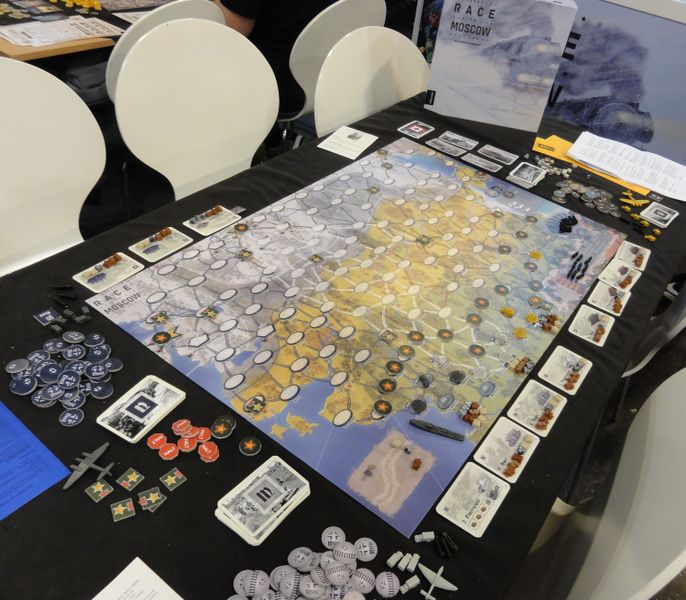Tag: BoardGames
Vassal: open-source game engine for building and playing online adaptations of board games and card games
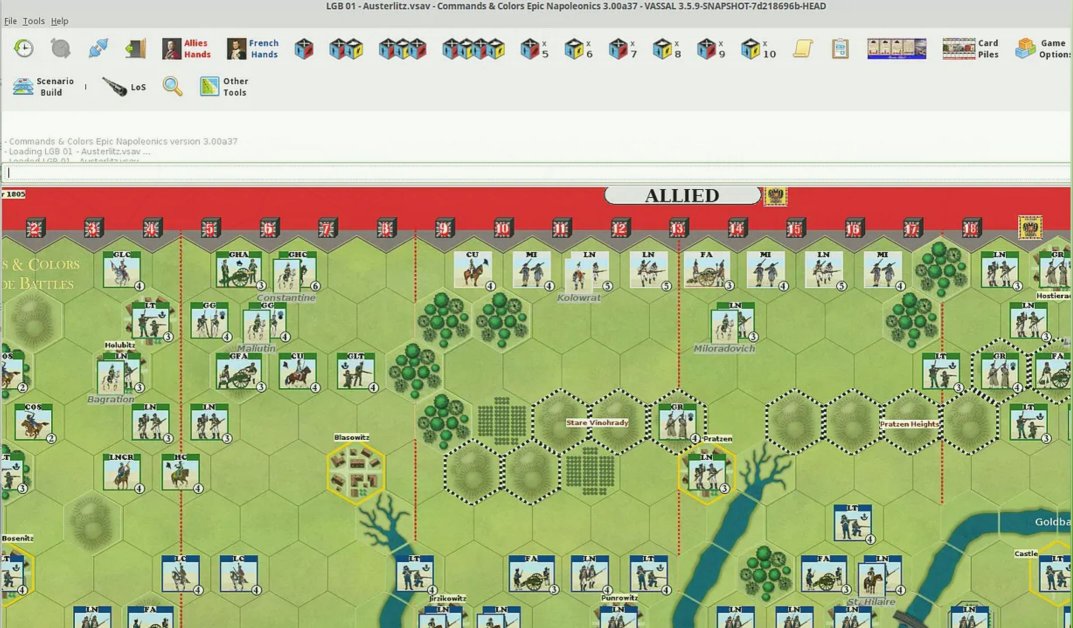
Encontrei este software que permite jogar em formato digital alguns jogos de tabuleiro. Para além disso tem as funções de:
“Vassal is a game engine for building and playing online adaptations of board games and card games. You can use Vassal to play in real time over the Internet or by email. Vassal runs on all platforms and is free, open-source software.”
Da vasta lista de módulos (jogos de tabuleiro) surge:
Module:Carcassonne
Module:Memoir ’44
Module:Axis & Allies: Battle of the Bulge
Module:The Great War
…
+infos(oficial): https://vassalengine.org/
Boardgames: ..board game design.. (um post de um blog)
Encontrei este texto no blog por Fink & Fink com o titulo “What I wish I knew about board game design before I started making games 8 years ago” com o seguinte texto:
This is Joe Slack from the Board Game Design Course. I recently discovered Fink & Fink games and I love how Nick is sharing his journey into board game design and transitioning to this full time. As a board game designer who has been making games for 8 years and who left my 17-year career in healthcare to pursue all things game design full-time about 3 and a half years ago, this got me thinking about all the things I wish I knew about game design before I started making games. Nick was kind enough to let me share my thoughts here on his blog. I hope you find this helpful in your own game design journey!
From ideas to design to Kickstarter, I’ve learned quite a few things over the past 8 years about designing board games. I’m going to share some of my biggest “a-ha” moments so that you can save yourself a lot of time and energy by not making the same mistakes I made.
Many of these thoughts are directly from my third book, The Top 10 Mistakes New Board Game Designers Make (And How to Avoid Them).
So, let’s jump right in!
Don’t worry about people stealing your idea
One of the biggest hang-ups I had early on as a game designer was around showing my game to other people outside of my circle of close friends and family. I thought that my game was so amazing and that everyone would want to steal the idea for themselves.
Boy was I wrong!
First of all, my game was okay, but it certainly wasn’t the best one ever created. It didn’t do anything groundbreaking and probably wasn’t even worth stealing.
Second, I didn’t comprehend the importance of showing my game to other people to get honest, unbiased feedback. This is such a crucial step in game design. Without hearing from other people what’s good and bad about your game, you can’t make the necessary improvements to turn it into the best game it can be. The only way to do that is to get over yourself and start showing it to others.
Third, playtesters and other game designers aren’t interested in stealing your game (especially if it’s at a very early stage and is just more of an idea). Other designers have their own games and don’t have the time or interest in taking yours. Besides, no one wants to earn the reputation of being a thief in such a small, tight-knit community.
Since execution is really the key element here, not your idea, this leads us very nicely into the next lesson…
Ideas alone are worthless
Every game begins as an idea. But like anything else, whether it’s a business idea, creative endeavor, or a New Year’s resolution, quite often that’s also where it ends.
Coming up with an idea is the easy part. Taking action and turning it into something is the hard part.
That’s why many of us keep a long list of ideas for things we want to do, but we rarely make a significant dent in it.
It’s so important to take the time and effort to turn that idea into something tangible. When it comes to a game idea, that means putting together the simplest prototype possible and testing it out.
The longer your idea just sits there in your head, the less chance you will actually do something with it. It’s even worse if you don’t write it down. If your memory is anything like mine, it will probably be forgotten by the next day (unless it’s an idea I just can’t stop thinking about!).
You have to execute on your idea. And here’s the fastest way I’ve found to do this…
Make your first prototype as quickly as you can
If you have a game idea that you think could be interesting, you must turn it into something tangible. You need to create a minimum viable prototype (MVP) and test out that idea. Try it by yourself, with friends and family, and when it gets to the point where it’s functioning well as a game, put it in front of strangers.
Just getting started is a huge hurdle. But if you can push yourself to create that first simple prototype and test it out, you’ll often become very invested in it and time will pass without you even noticing.
It doesn’t have to include everything you’ve had in your head. In fact, it’s best if you just keep this to the most basic version you can. Just make enough cards, boards, etc. you need, grab some dice, meeples, cubes, or anything else you need to get started. Don’t make an entire deck of 500 cards, just make 10 or 20 to see if the concept even works first.
If you want to be a prolific game designer, or even just create one game, you’re not going to be able to do this all in your head. You need to put something on paper, roll some dice, move some meeples, and see what’s working and what you need to change.
Put something simple together and try it out. See what works. See what doesn’t. There may be a lot of things not working initially, but that’s okay. This is where you work out the kinks and start to make early improvements.
Get your game in front of as many people as possible
Getting your game playtested by others is so crucial for getting valuable feedback to improve your game. This means getting it in front of as many people as possible, particularly other game designers and your core audience.
Try it out by yourself. But once you’ve worked out those initial kinks and know that it’s playable, you need to get it in front of other people.
You can start with family, friends, and anyone else willing to give it a try. As it develops, you’ll continue playtesting it with other designers, strangers, and anyone else who doesn’t run away when you pull out the box.
If you’re afraid to play your game with others, your game will not improve. At least not to the point where it’s going to be able to compete against all the other great games on the market.
Remember that games aren’t made in isolation. You need to share them with others who will help you make them better.
I’m about to give you some advice that will sound very counter-intuitive at first, but bear with me: If you’re still concerned in any way, the best thing you can do is play your game more, share images online, and show it to more people.
Here’s why: You’ll have a record. Proof that your game exists, and before anyone else had the idea. By making your game more public, you’ll be able to more easily prove your game existed first, as many people and archives will be able to support your claim. How’s that for a win-win solution?
Don’t waste time and money on things you don’t need
It’s really easy to fall into certain traps when you’re starting out in game design. Some of these will slow down your progress and waste time, others will cost you money, and some will cost you both time and money.
Unless you are self-publishing your game, there’s no need to spend any money at all on art or graphic design. If a publisher picks up your game, they will be the ones to choose which artist and graphic designer to work with (or will do this in-house) and will cover all the costs. If you spend money on this, it will almost definitely be completely wasted.
Another mistake is to get trademarks early on. This was my most costly mistake. It set me back $772, but it actually could have been much worse.
You see, I created my first game and was scared that someone else would try to take the clever name we had come up with. So, I started looking into how to protect myself. My co-designer and I even had a call with a lawyer. We decided we should protect what we had come up with.
Big mistake.
I discovered that every region has its own process and accompanying fee. To ensure full coverage, we would have had to apply and pay for a trademark in the US, Canada, China, regions in Europe, and the list goes on.
Fortunately, we settled for trademarks in Canada and the US. If we had considered going worldwide, we could have wasted a fortune!
Other things you may waste a lot of time and money on are finding the “perfect” sample art pieces online, making expensive, professional-looking prototypes when your game is at an early stage and will change a lot still, and searching for the exact components you want.
So, when you’re thinking about laying out a lot of money or spending a lot of time on something related to your game, ask yourself, “is this really necessary?”
+infos(fonte): LINK
Gamer’s Chest, All-in-One Tabletop Game Organizer
Encontrei este projeto no kickstarter para os jogos de tabuleiro.. tão fixe!
+infos(a campanha): LINK
Trench Club
Mais uma campanha para ajudar na colocação no mercado de um jogo de tabuleiro (campanha que já terminou). Esta era sobre um jogo com o tema da primeira guerra mundial e um preço interessante. Outra coisa interessante é o facto de o jogo permitir que exista um modo solitário :)
A campanha terminou mas ficam aqui algumas das informações para posterior comparação:
_preço mínimo de apoio 49 euros ou 75 (com extras)
_dois cenários de jogo
_mais de 300 marcadores de evolução do jogo
_várias fações de jogo: reino unido, franceses, alemães, império Austro-Húngaro
_e muitos outros objetos complementares
já é possível fazer o download das regras do jogo :) as vendas/entregas serão feitas no inicio do próximo ano.
+infos(link da campanha): LINK
+infos(pagina oficial): http://trench-club.com/
Memoire’44, as expansões
” all these Memoir ’44 expansions should be back on stores before the end of the year!
– Pacific Theater
– Mediterranean Theater
– Winter Wars
– Eastern Front
– Terrain Pack
– Operation Overlord
– Winter/Desert Map.”
+infos(rede social): LINK
Jogos de tabuleiro e manuais em PT e ING
..algumas referências:
Allies Battle of the Bulge
Axis and Allies DDay
Carcassonne: Star Wars
Catan
Heroes of Normandie TCG – Operation Goodwoo
Heroes of Normandie TCG
Imperial Settlers
Memoire 44
Pandemic
Pandemic Legacy: Season 1
Pandemic Legacy: Season 2
Pandemic: Fall of Rome
Pandemic: On the Brink
Pandemic: Rapid Response
Pandemic: Reign of Cthulhu
Pandemic: Rising Tide
Pandemic: State of Emergency
Tide of Iron
Vikings Gone Wild
+infos(manuais em PT): LINK
+infos(manuais em INGL): LINK
boite a jeux, um portal
Um portal onde se podem experimentar jogos de tabuleiro convertidos para formato digital :), tudo gratuito!
+infos(boite a jeux): http://www.boiteajeux.net/
2GM Pacific
A malta do 2GM tem a decorrer uma campanha relativa ao jogo 2GM Pacific que relata as histórias da segunda grande guerra nas para os lados do pacifico.
Esta mesma editora é responsável pelo jogo 2GM Tactics, que é sobre o que se passou na Europa.
Existem várias formas de participação sendo que aquelas que destaco são:
39 euros + portes – 2GM Pacific + ALL unlocked Stretch Goals
ou então
130 euros + portes 2GM Pacific (New Core Game); ALL unlocked Stretch Goals; Italy Expansion (First Edition); Germany Reinforcement Expansion (First Edition); United Kingdom Expansion (First Edition); USSR Expansion (First Edition); Previous KS exclusive deck with 92 cards; 2GM Tactics original core game (in English)
O jogo parece ser interessante e acho que o preço é +-justo .. mas vai ter que ficar para outras oportunidades.
+infos(campanha): LINK
1941: Race to Moscow
Estive para participar nesta campanha deste jogo de tabuleiro, contudo hesitei porque ainda não joguei um outro jogo similar a ele, o 1944: Race to the Rhine. Esta campanha ficava em 60 libras+ 12 libras para o transporte (+- 85,55 euros), com alguns extras
+infos(campanha): LINK
+infos(comparação): LINK
Boardgames: board game design
Apesar de ser sobre boardgames é um texto interessante que descreve as opções acerca do desgin de um board game. Com o titulo “Indigenous board game design in the gift of food” o texto foi escrito em 2016 por Elizabeth Lapensée, onde ela destaca o trabalho que foi tido para revelar alguns aspectos culturais e como este tema é abordado num jogo de tabuleiro.
+infos(fonte oficial): LINK
+infos(blog estudos): http://analoggamestudies.org/
BoardGames e referências..
estudos: Board Game Studies Journal
https://content.sciendo.com/view/journals/bgs/bgs-overview.xml
blog: “Boardgames That Tell Stories”
https://boardgamesthattellstories.wordpress.com/
livro: “Zones of Control: Perspectives on Wargaming (Game Histories) (Inglês) 1st Edition”
+infos(amazon): LINK
blog: Designers and Dragons
https://www.evilhat.com/home/designers-dragons/
livro: “On Wargaming: How Wargames Have Shaped History and How They May Shape The Future” de Matthew B Caffrey Jr.’s
+infos(goodreads): LINK
blog: Meeples Together
+infos(oficial): https://www.meeplestogether.com/
livro: Board and Table Games from Many Civilizations de R. C. Bell
+infos(amazon): LINK
livro: Dice Games Properly Explained de Reiner Knizi
+infos(amazon): LINK
livro: Playing at the World by Jon Peterson
+infos(amazon): LINK
livro: eurogames: The Design, Culture and Play of Modern European Board Games de Stewart Woods
+infos(amazon): LINK
blog: Analog Game Studies
+infos(oficial): http://analoggamestudies.org/
livro: The Kobold’s Guide to (Board) Game Design
+infos(amazon): LINK
Mémoire 44 – um daqueles jogos de tabuleiro :)
| Numbers of players | 2 players (possibility to play in teams) |
| Recommended age | From the age of 8 |
| Duration of a game | about 30 minutes |
| Author | Richard Borg |
| illustrators | Cyrille Daujean , Claude Rica , Julien Delval |
| Editor | Days of Wonder |
| Price | $ 55 |
“Conclusion
Memory 44 is a strategy / wargame game in which one moves one’s units on a board to carry out one’s mission. We were surprised by the astonishing simplicity of the rules and their formidable efficiency. Mémoire 44 proposes to immerse oneself in the great battles that were decisive for the Second World War.
Few actions per turn, we must deal with the command cards that we have in hand to carry out its mission. From this constraint will be born different strategies at each part for a very consistent replayability. Respect for history and the accuracy of the introductory paragraphs of the different scenarios make it almost an educational game, but without being too insistent or cumbersome. Moreover, the refractory to the principle can completely dispense with the reading of the paragraphs.
We will never have had as much fun playing the little soldiers as in a game of Memory 44 !”
Um texto interessante acerca deste belo jogo :)
+infos(oficial): LINK
